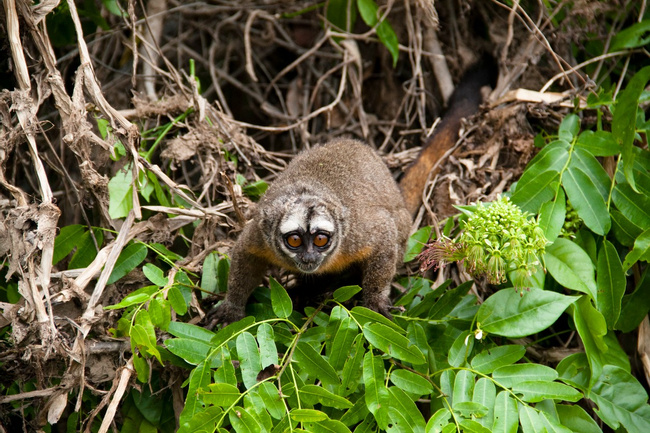Panamanian Night Monkey
The Panamanian night monkey (Aotus zonalis), or Chocoan night monkey, is a nocturnal monkey that lives in parts of Central and South America. Weighing in at just 30 oz., they are one of the world’s lightest monkeys.

More about Panamanian Night Monkey
Habitat
Panamanian night monkeys are found in lowland, submontane forests up to 3,280 feet (1,000 m) in Panama and western Colombia. Their range extends from Panama and Colombia to the west of the Andes Mountains.
Physical Description
These monkeys are small, with big brown eyes and a short tail. Most of their fur is greyish/reddish-brown, but they do have yellow fur on their belly.
Interesting Biology
As its name implies, this monkey is nocturnal and most active at dawn and dusk. Due to this and also because they have a round face, they are often referred to as an owl monkey. They are arboreal creatures and live high in trees to avoid predators.
Panamanian night monkeys have monochromatic vision. That is, they can only see in one color. They also have night vision.
Panamanian night monkeys are monogamous and live in small groups of an adult pair and their offspring. The pair typically gives birth to one infant each year. Males carry the infants but give them to the mother for nursing. The Panamanian night monkey is thought to reach sexual maturity around the age of five.
They can communicate with over nine vocal calls and behavior like jumping and back arching. Males develop scent glands near their tail that are used to mark territory. Night monkeys are territorial, although groups sometimes have overlapping territories.
Diet
Their diet consists of fruit, nuts, flowers, leaves, nectar, small vertebrates, and small insects and spiders.
Height/Weight
Panamanian night monkeys weigh between 31 and 32.5 ounces—this makes it one of the lightest monkeys in the world. They average around 12 to 13 inches in height.
Brief Taxonomy
Order: Primates
Family: Aotidae
Sources
Fernandez-Duque, E. (2007). "Aotinae". In Campbell, C., Fuentes, A., MacKinnon, K., Panger, M., & Bearder, S. Primates in Perspective. pp. 139–150.
Defler, T. (2004). Primates of Colombia. Conservation International. pp. 252–266.
Similar Profiles
We believe travel is more than ticking destinations off a list – it’s about discovering new places deeply, feeling connected wherever you go, and knowing you have a trusted team behind you every step of the way.



